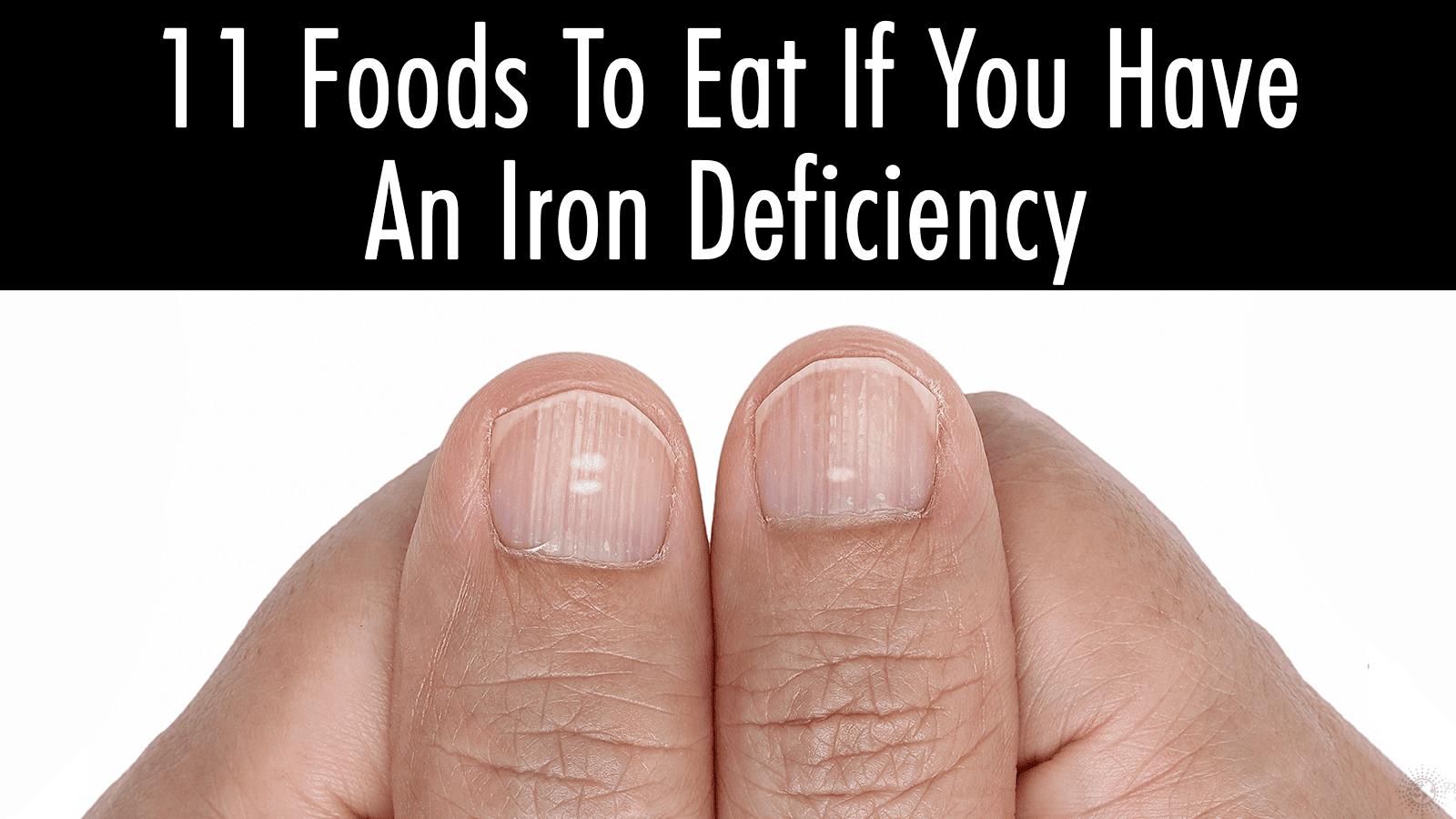The average diet lacks the essential nutrients, especially iron. Most prominent public health agencies, (e.g. the World Health Organization, or “WHO”) cite higher rates of iron deficiency than any other vitamin, mineral, or nutrient.
“Iron deficiency is one of the most common nutrient deficiencies in the world, affecting more than 25% of people worldwide. This number rises to 47% in preschool children.” – Adda Bjarnadottir, MS
In this article, we are going to talk about iron deficiency. We will also discuss symptoms, prevention, and treatment.
The Functions of Iron
Iron is an essential mineral. Essential nutrients include “the building blocks of carbohydrates, lipids, proteins, certain vitamins and minerals, and water.” Additionally, iron must be obtained through dietary sources.
Iron is critical to producing hemoglobin, a substance in red blood cells that transports oxygen throughout the body and muscle cells. Recent studies show that iron deficiency anemia may cause neuro-cognitive problems in adults. A small amount of the body’s store of iron (about 6%) aids in the synthesis of both collagen and neurotransmitters.
Populations at Risk of Iron Deficiency
“The prevalence of iron deficiency anemia is 2 percent in adult men, 9 to 12 percent in white women, and nearly 20 percent in black and (Latino) women.” – American Family Physician (source)
As with most medical conditions, specific demographics are more at risk of developing iron deficiency. Among the at-risk populations include:
Pregnant women: Pregnant women are more likely to acquire an iron deficiency due to the increased need for iron to supply blood to the baby, providing the fetus with necessary oxygen. Consequently, studies show that above 35 percent of pregnant women are iron deficient.
Children and infants: Children require a steady intake of iron especially during periods of “growth spurts.” Infants who are deficient in iron usually don’t get enough of this vital nutrient from breast milk or formula.
Vegans and Vegetarians: Some research demonstrates that people who don’t eat meat are at a higher risk of iron deficiency.
Other risk factors of iron deficiency include obesity and age. Concerning the former, researchers aren’t sure as to the biological cause. Certainly, high inflammation levels and reduced absorption of iron into the small intestine play a role.
Iron Deficiency Anemia
Iron deficiency anemia, or microcytic anemia, is defined as “when the iron deficiency is sufficient to reduce [red cell production]” thereby lowering hemoglobin count. Paleness of the skin and fatigue are the two most common signs of anemia. Iron deficiency anemia is diagnosed via a blood test.
Non-anemic iron deficiency (’NAID’) is a medical term applied when the patient exhibits the symptoms of anemia, yet their hemoglobin count tests in the normal range. As one may imagine, diagnosing this condition is difficult.
Per a research study published in the journal Clinical Case Reports, low levels of the iron-storing protein, ferritin, is a good indication that the person is suffering from NAID; this is particularly true if the individual has a medical history of conditions defined by blood loss.
Research shows that NAID is up to three times more common than iron deficiency anemia. The condition is more widespread in underdeveloped countries. We will discuss the things that interrupt the absorption of iron shortly.
Besides iron deficiency, anemia can be caused by low levels of vitamin B-12 and folate. Experts call such a condition macrocytic anemia, or “vitamin deficiency anemia.” Conditions that may cause macrocytic anemia include hypothyroidism, liver disease, or metabolic disorders. Medications that suppress the immune system may also be a catalyst for anemia.
Signs of Iron Deficiency
As a reminder, the two key symptoms of non-anemic iron deficiency are pallor (a sickly, pale appearance) and fatigue. Following are four additional signs of a possible iron deficiency to never ignore:
1. Dizziness and headaches:
Low levels of hemoglobin restrict the transport of oxygen to the brain. When deprived of even a relatively small amount of oxygen, the blood vessels constrict, causing intra-cranial pressure and sometimes headaches. Frequent headaches accompanied by dizzy spells could point to a possible shortage of iron.
2. Irregular heartbeat:
Abnormal heartbeat, or heart palpitations, may indicate an iron deficiency. As levels of hemoglobin drop, the cardiovascular system is forced to work harder to distribute oxygen throughout the body. Some medical experts think that this extra work may cause heart palpitations.
3. Weakness:
The cells and tissues of our body need oxygen to produce energy. Oxygen-produced cellular energy is necessary for the proper functioning of every part of our body. Additionally, as mentioned above, other organs and systems of the body remain on overdrive to help deliver life-giving oxygen. Because these organs and systems grow stressed, this heavy workload taxes our energy reserves.
4. Shortness of breath:
Low hemoglobin stores will mean less oxygen for the respiratory and cardiovascular system. While depriving our heart and lungs, low oxygen levels also affect our muscles. If you have difficulty performing normal, easy daily activities (e.g., walking, climbing stairs, standing up, etc.) it could be because the muscles are not receiving enough oxygen. Furthermore, our body detects oxygen lack and makes up for it by increasing respiration, which may manifest as shortness of breath.
Prevention and Treatment of Iron Deficiency
Prevention measures for iron deficiency include:
- Targeted iron supplementation
- Abstaining from foods that disrupt iron absorption
- Eating foods that are rich in iron, including iron-fortified cereals, beans and lentils, baked potatoes, cashews, legumes, spinach, shellfish, and quinoa
- Treating any underlying medical condition that will exacerbate any iron deficiency
- Regular visits to a licensed physician (especially if you are pregnant).
Foods that are known to complicate or disrupt iron absorption include dairy milk, tea, coffee, cheese, broccoli, almonds, figs, sardines, and canned fish.
Treatment of iron deficiency depends on the type, cause, and severity. As a result, traditional treatment options include:
- Iron supplementation
- Changes in lifestyle, particularly one’s diet
- Iron therapy (consists of various treatments)
- Intravenous (I.V.) iron delivery
Recommended Intake of Iron
Iron is an essential mineral, meaning that our body cannot produce it on its own. First, the healthiest way to acquire iron is through diet. Natural, minimally-processed, and organic foods are best. The various foods dense in iron include:
Meat and poultry: Beef, chicken, lamb, liver, turkey, pork, and veal
Seafood: Fatty fish, mussels, and shellfish
Vegetables: Bean sprouts, beets, green beans, corn, cabbage, greens, Brussel Sprouts, lima beans, potatoes, tomatoes, sweet peas, and kale
The recommended daily intake of iron is as follows:
| Age | Male | Female | Pregnancy | Lactation |
| 14-18 years | 11 mg | 15 mg | 27 mg | 10 mg |
| 19-50 years | 8 mg | 18 mg | 27 mg | 9 mg |
| 51+ | 8 mg | 8 mg |
Final Thoughts on Iron Deficiency
The balanced intake of all nutrients is vital for every bodily function, including those of the heart and brain. To close out this article, we’ll quickly discuss the most important nutrients as they related to human health, along with the recommended daily allowance (RDA) of each.
Protein:
Protein is the building block of every cell, thus is essential for cellular growth and maintenance. Good sources of protein include beans, eggs, fish, meat and nuts.
RDA – 0.36 grams per pound of body weight (0.5 to 0.8 grams for athletes).
Carbohydrates:
The type of carbohydrate that you eat matters – a lot. “Good carbs” include things like fresh fruits and vegetables, legumes, nuts, seeds, and whole grains. “Bad carbs” are things like added sugar and starches. Eat more of the former and less of the latter. Carbs are critical for alertness, energy, and the conversion of fat.
RDA – 45 to 65 percent of total calorie intake.
Fats
Just as with carbohydrates, the types of fat that you consume is important. The right kinds of fat, like monounsaturated and polyunsaturated, help with brain and heart health. They also promote cell growth, blood clotting, and vitamin and mineral absorption. Excellent dietary sources of fat include most plant-based foods and oils. Additionally, avocados, dark chocolate, fatty fish, Greek yogurt, nuts, coconut and olive oil, seeds, and whole grains are all excellent options.
RDA – 44 to 78 grams for a 2000-calorie diet.
Vitamins
There are a total of 13 essential vitamins that the body needs. By far, the best source of all vitamins is fresh fruit and vegetables. In a nutshell, following is the role of vitamins in preventing disease and promoting overall health:
- Vitamin A is vital for our vision and immune system.
- B-complex vitamins are necessary for healthy blood cells, energy, and also nerve function.
- Vitamin C helps provide energy and, of course, a robust immune system.
- The D vitamin is necessary for healthy bones and teeth.
- Finally, Vitamin E promotes healthy hair and skin.
RDA – Various; please see important information on vitamins and minerals here.
Water
Water is arguably the most vital element for health and wellness. H2O gives us energy. It also balances body fluids and facilitates absorption, blood circulation, and digestion. Water helps us feel fuller. Additionally, it promotes skin health, detoxifies the kidneys and maintains proper bowel function. Water helps regulate body temperature, hydrates the blood and tissues, lubricates the joints, and helps with concentration and alertness.
RDA – The National Academies of Sciences, Engineering, and Medicine found that proper daily fluid intake is about 4 liters (~ 15 cups) for men and 3 liters (~ 12 cups) for women.
https://www.youtube.com/watch?v=T1ke5KbOAZs















